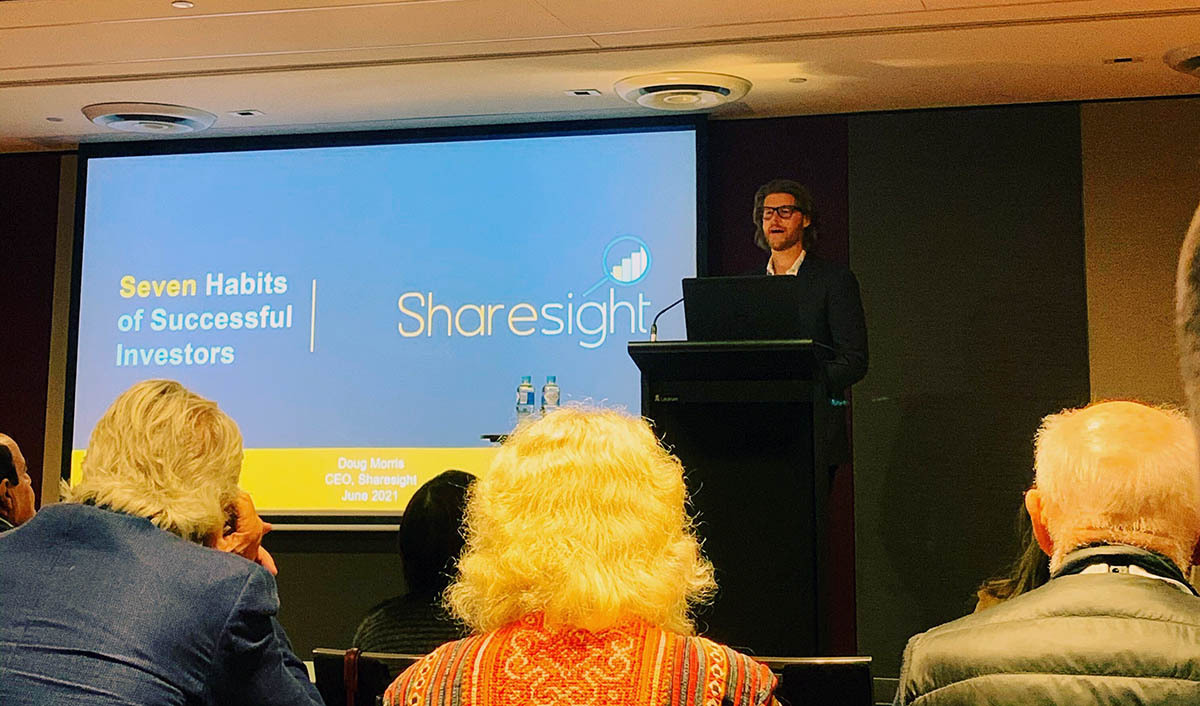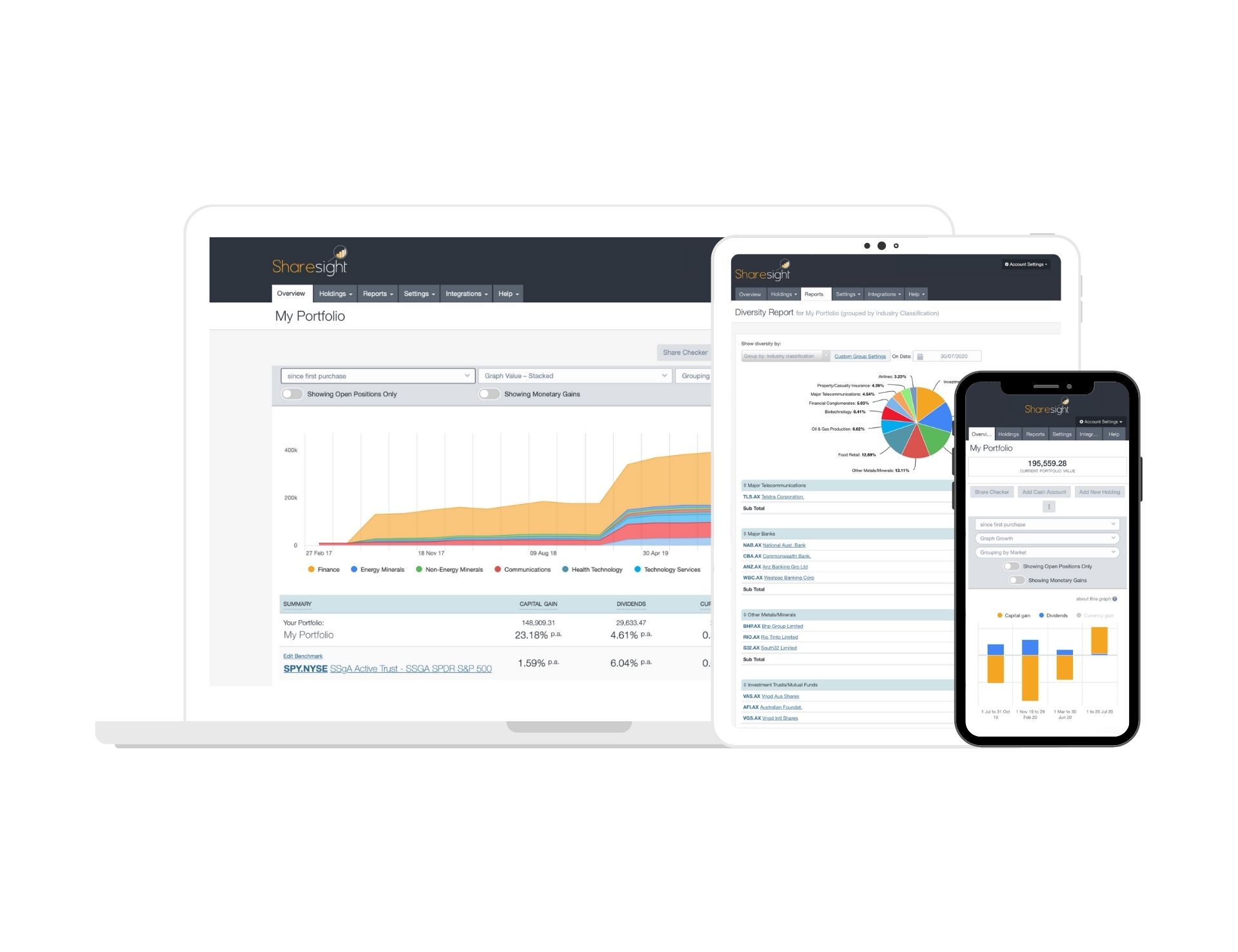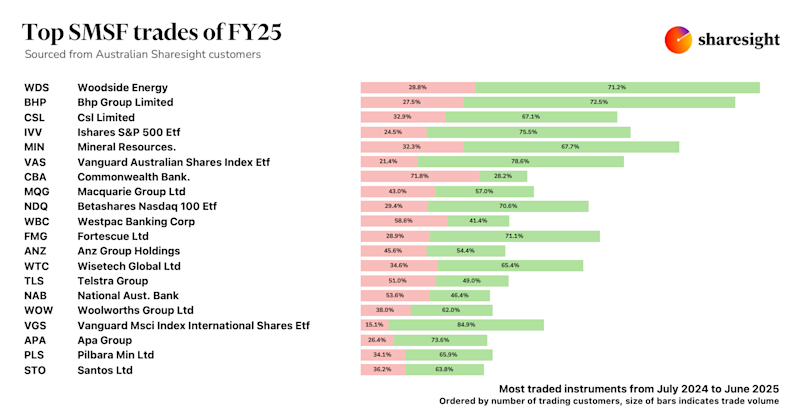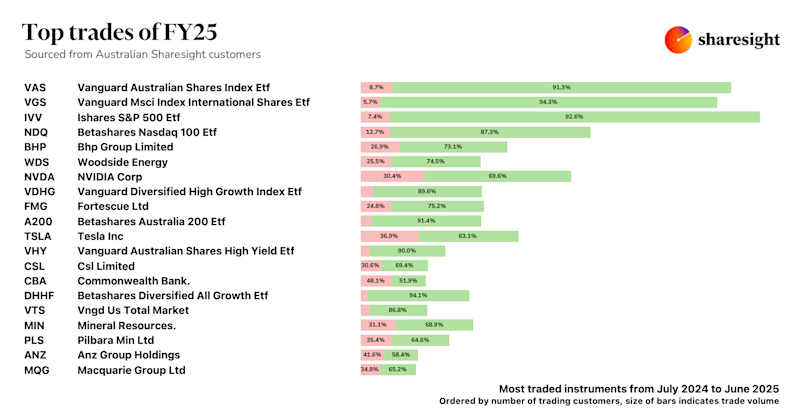ASA Investor Conference 2021 wrap-up
It’s been an exciting few days for the team at Sharesight, having had the opportunity to attend the Australian Shareholders' Association’s 2021 Investor conference. The theme of this year’s event was ‘how to become a better investor’ – a topic very fitting for Sharesight. Some of the highlights for us include the opportunity for our Chief Marketing Officer, Prashant Mohan, to give a demo of Sharesight, as well as our CEO Doug Morris’s talk on the seven habits of successful investors. There were also plenty of great conversations at our event booth, with lots of investors wondering how they can get started tracking their investments with Sharesight.
 Investors visiting the Sharesight booth at the 2021 ASA Investor Conference.
Investors visiting the Sharesight booth at the 2021 ASA Investor Conference.
We would like to thank the ASA for a fantastic event, and for those who could not attend, here is a snapshot of some of the best talks that we think can help you to become a better investor.
Seven habits of successful investors
Sharesight CEO Doug Morris presents some of the most important habits of successful investors based on his personal experience.
-
Invest in what you understand and love, not just what you think you should be investing in. This makes it much easier to stay informed on the companies in your portfolio.
-
Understand your true performance. Don’t look to your broker to get an understanding of your performance. Unlike Sharesight, brokers don’t take into account dividend performance, foreign exchange rates, corporate actions and other factors that affect the cost base of your portfolio. They also do not provide money-weighted annualised return figures.
-
Understand who profits from whom. Brokers are focused on execution, while asset managers tend to focus on third-party distribution networks to sell investments. Share registries are also focused on their role as custodians of dividend information, while advisors tend to rely on expensive platforms. The investor ends up in the middle of all of this. Sharesight’s portfolio management software brings all of these market participants together through an advanced API that creates a seamless ecosystem for self-directed investors.
-
Asset allocation matters. Your asset allocation determines 50% of your returns, while the other 50% comes from active management. Consider your asset allocation carefully as you are nearing retirement. For example, you may choose to lower your exposure to small stocks due to their tendency towards volatility.
-
Benchmark yourself. Consider your benchmark as a realistic alternative strategy if your investment portfolio is not performing well.
-
The only guaranteed outcome in investing is the fees you will pay to do it. There are a lot of interesting new lost-cost brokers entering the market, but be aware of the tradeoff you will have to make with these brokers. Eg. Will you actually own your shares? Also consider the compounding effect of brokerage fees over time and how this impacts your investment portfolio.
-
Make a mistake and learn from it. Don’t be afraid to make mistakes. Ideally however, they will be (relatively) inexpensive mistakes that you make early on and never repeat again.
 Sharesight CEO Doug Morris presenting the seven habits of successful investors.
Sharesight CEO Doug Morris presenting the seven habits of successful investors.
Behavioural economics and investing
Anthony Doyle, an Investment Specialist from Fidelity International explains how understanding behavioural economics and the biases we have as investors is crucial to avoiding asset bubbles. He cites Bitcoin, the Nasdaq and Australian housing as some of the potential bubbles of today, for instance.
Here are some of the key biases investors should avoid:
-
Confirmation bias: We tend to seek views that are similar to our own. Avoid this by considering scenarios that differ from your thesis and evaluate investments based on first principles.
-
Highsight bias: We tend to think we made better investment decisions than we actually did. Be wary of linear explanations and always conduct forward-looking research.
-
Representativeness: Sometimes we make judgements that are statistically unlikely due to stereotypes. For example, investors can wrongly assume a company is ‘hot’ due to its sector or expect good companies to stay good and bad companies to stay bad. Avoid this by making decisions based on data and doing stock-specific research.
-
Overconfidence: Beware of becoming overconfident in periods of stability.
-
Herding: There is a tendency for investors to want to do what everyone else is doing. In some cases it can be beneficial to move with a crowd, however crowds can also have biases and make assets move far from their intrinsic value. The best strategy is to be a contrarian. Use valuation metrics and if you’re looking for diversification, consider targeting value stocks, which often move differently to the broader market.
-
Loss aversion: Due to their fear of losses, investors often sell winners too quickly and hold onto losers for too long. Avoid this by reviewing your investments from first principles as if you don’t own them, and stick to a consistent investing strategy despite market trends.
Building low-cost diversified portfolios
David Bassanese, Chief Economist at BetaShares explains how investors can approach building a diversified balanced portfolio using BetaShares ETF products as examples.
The importance of diverse asset classes:
-
Each different asset class will reflect different risk and return characteristics, and will perform differently in different market conditions. Investors should find a risk-return profile that fits their age, temperament and where we are in the business cycle.
-
Think of asset allocation like "blending wine". Blending two wines with different characteristics can allow a broader range of wine styles.
-
An investing example: Investing in two businesses that do well at different times of the year can smooth out overall revenues over the year.
-
It’s important to choose your preferred level of risk. There are two opposite sides of the spectrum: high-risk assets and low-risk assets. To create a balanced portfolio, you should vary weights between both sides of the spectrum.
-
It’s possible to build a balanced portfolio by purchasing exchange-traded products (ETPs) such as ETFs. For example, you could create a balanced, diversified portfolio by dividing your investments into cash, floating-rate bonds, fixed-rate government and corporate bonds, hybrids, property/real assets, local and international equities and commodities.
-
The percentage breakdown might be 40% cash/bonds/hybrids, 50% equities/property and 5% gold, for instance.
Become a better investor with Sharesight
Become a better investor by leveraging Sharesight’s powerful features for self-directed investors, including dividend tracking, benchmarking and a range of advanced reports. What are you waiting for? Sign up and:
-
Track all of your investments in one place, including stocks, mutual/managed funds, property and even cryptocurrency
-
Automatically track your dividend and distribution income from stocks, ETFs and mutual/managed Funds
-
Run powerful reports built for investors, such as Performance, Portfolio Diversity, Contribution Analysis, Multi-Currency Valuation and Future Income (upcoming dividends)
-
See the true picture of your investment performance, including the impact of brokerage fees, dividends, and capital gains with Sharesight’s annualised performance calculation methodology
Sign up for a FREE Sharesight account and get started tracking your investment performance (and tax) today.

FURTHER READING

Sharesight users' top 20 trades – June 2025
Welcome to the June 2025 edition of Sharesight’s monthly trading snapshot, where we look at the top buy and sell trades by Sharesight users in all markets.

Top SMSF trades by Australian Sharesight users in FY24/25
Welcome to our annual Australian financial year trading snapshot for SMSFs, where we dive into this year’s top trades by Sharesight users.

Top trades by Australian Sharesight users in FY24/25
Welcome to the FY24/25 edition of our Australian trading snapshot, where we dive into this financial year’s top trades by Sharesight users.